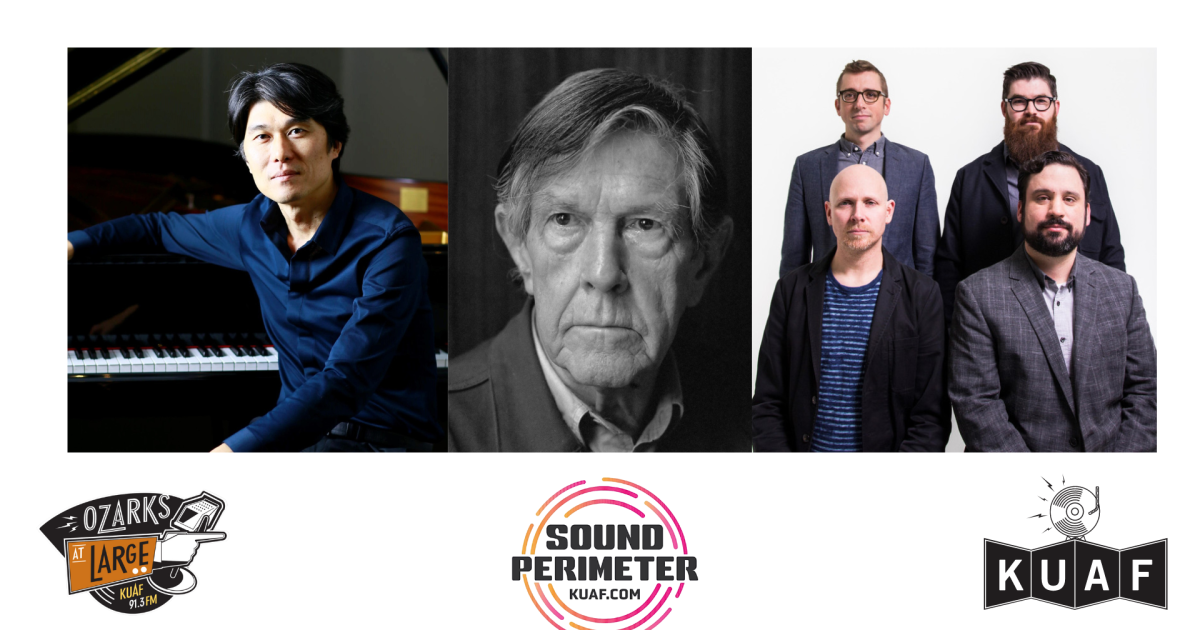Understanding The Sound Perimeter: Music And Social Cohesion

Table of Contents
Music as a Catalyst for Collective Identity
Shared musical preferences create a powerful sense of "us" versus "them," forging a collective identity that binds individuals together. This shared experience strengthens social bonds and contributes significantly to the overall social fabric.
-
National Anthems and Patriotism: National anthems, for example, represent a powerful example of music's ability to foster patriotism and a sense of national unity. The stirring melodies and unifying lyrics evoke strong feelings of national pride and collective identity. The sound perimeter in this case is vast, encompassing entire nations.
-
Popular Music and Youth Culture: Popular music genres often play a crucial role in youth culture and identity formation. Specific musical styles become synonymous with particular subcultures, allowing young people to express their identity and connect with like-minded individuals. This creates a strong sound perimeter within their peer groups.
-
Celebrating Shared Heritage: Many communities use traditional music and song to celebrate their shared heritage and traditions. This strengthens cultural identity and fosters a sense of belonging, reinforcing the community’s sound perimeter. Think of the vibrant folk music traditions passed down through generations.
-
Musical Subcultures and Cohesion: Musical subcultures, from punk rock to classical music enthusiasts, create their own unique sound perimeters. These communities, often built around shared musical tastes and values, offer a strong sense of belonging and support within their respective groups.
The Sound Perimeter in Community Building
Music acts as a powerful facilitator of interaction and communication within communities, strengthening the invisible sound perimeter that binds them together.
-
Local Music Scenes and Community Hubs: Local music scenes often support local businesses and create vibrant community hubs. Live music venues become meeting places, fostering social interaction and a sense of community spirit. This localized sound perimeter is crucial for the health of smaller towns and cities.
-
Collaborative Music-Making and Social Bonds: Collaborative music-making, such as participation in choirs or bands, fosters teamwork, cooperation, and strong social bonds. The shared effort and creative process strengthen the sound perimeter within the group.
-
Music Festivals and Community Unity: Music festivals and concerts bring diverse communities together, creating a temporary yet powerful sound perimeter of shared experience and enjoyment. These events transcend social and economic barriers, fostering unity and understanding.
-
Music Therapy and Social Interaction: Music therapy utilizes the power of music to improve social interaction, reduce isolation, and enhance communication skills, particularly for individuals with social challenges. This highlights the therapeutic potential of the sound perimeter.
Music and Conflict Resolution
Music possesses a remarkable ability to bridge divides and promote understanding between different groups, acting as a powerful tool for conflict resolution.
-
Peacebuilding Initiatives: Music is increasingly used in peacebuilding initiatives and reconciliation efforts. Shared musical experiences can help to foster empathy and understanding between conflicting parties, weakening the barriers that divide them and creating a new, more inclusive sound perimeter.
-
Cross-Cultural Collaboration: Cross-cultural musical collaborations are particularly effective in promoting empathy and understanding. By working together to create music, individuals from different backgrounds learn to appreciate each other's perspectives and build bridges of understanding, expanding the sound perimeter beyond cultural boundaries.
-
Facilitating Dialogue: Music can provide a safe and creative space for dialogue and mutual respect. Shared musical experiences can break down barriers and create opportunities for constructive communication, ultimately strengthening the sound perimeter of peace and reconciliation.
The Digital Sound Perimeter: Music and Online Communities
The internet and social media have significantly impacted the creation and maintenance of musical communities, creating new and evolving sound perimeters in the digital realm.
-
Online Music Platforms and Connection: Online music platforms connect individuals with shared musical interests, regardless of geographical location. This expands the sound perimeter beyond local communities, creating global networks of music lovers.
-
Online Fan Communities and Social Cohesion: Online fan communities, built around specific artists or genres, foster strong social cohesion among fans. These communities provide a sense of belonging and shared identity, strengthening their digital sound perimeter.
-
Streaming Services and Social Interactions: Streaming services are shaping the musical landscape and influencing social interactions. Algorithmic recommendations, while convenient, can sometimes limit exposure to diverse musical styles, potentially weakening the overall sound perimeter by creating echo chambers.
-
Social Media and Virtual Sound Perimeters: Social media plays a crucial role in music promotion and the creation of virtual sound perimeters. Artists use social media to connect with fans, build communities, and share their music, expanding their reach and influence.
Threats to the Sound Perimeter: The Impact of Social Fragmentation
Several factors threaten the social cohesion created by music, potentially weakening the sound perimeter and its unifying power.
-
Social Media Echo Chambers: Social media echo chambers and filter bubbles can limit exposure to diverse musical styles and perspectives, reinforcing existing biases and hindering the creation of a truly inclusive sound perimeter.
-
Political Polarization and Musical Preferences: Societal divisions and political polarization can influence musical preferences, leading to the creation of separate and sometimes opposing sound perimeters based on political affiliation.
-
Challenges in Creating Inclusive Musical Environments: Creating inclusive musical environments that are accessible to all members of society, regardless of background or ability, remains a significant challenge. Overcoming these barriers is crucial for strengthening the overall sound perimeter.
Conclusion
The "sound perimeter" created by shared musical experiences plays a vital role in social cohesion, fostering community, building bridges, and enriching our lives. From national anthems to local music scenes, from online fan communities to cross-cultural collaborations, music's power to unite is undeniable. Understanding and strengthening this sound perimeter is crucial for building stronger, more inclusive, and harmonious societies. Let's continue to explore the profound impact of music and actively participate in creating a more cohesive world through shared musical experiences. Learn more about the power of the sound perimeter and how it influences your community.

Featured Posts
-
 Peppa Pigs Parents Announce Babys Gender With A Fun Party
May 21, 2025
Peppa Pigs Parents Announce Babys Gender With A Fun Party
May 21, 2025 -
 Sharath Kamals Emotional Farewell At Wtt Contender Chennai 2025
May 21, 2025
Sharath Kamals Emotional Farewell At Wtt Contender Chennai 2025
May 21, 2025 -
 Irish Actor Barry Ward An Interview On Roles And Perceptions
May 21, 2025
Irish Actor Barry Ward An Interview On Roles And Perceptions
May 21, 2025 -
 Michael Bay And Sydney Sweeney To Star In Outrun Movie Adaptation
May 21, 2025
Michael Bay And Sydney Sweeney To Star In Outrun Movie Adaptation
May 21, 2025 -
 Mysterious Red Lights Flash Over France What Was It
May 21, 2025
Mysterious Red Lights Flash Over France What Was It
May 21, 2025
Latest Posts
-
 Strange Red Lights Appear In French Skies Investigation And Theories
May 21, 2025
Strange Red Lights Appear In French Skies Investigation And Theories
May 21, 2025 -
 Ambitious Swimming Pool Project Set To Transform Nices Sporting Landscape
May 21, 2025
Ambitious Swimming Pool Project Set To Transform Nices Sporting Landscape
May 21, 2025 -
 Red Light Flashes In France Unidentified Aerial Phenomena Explained
May 21, 2025
Red Light Flashes In France Unidentified Aerial Phenomena Explained
May 21, 2025 -
 Mysterious Red Lights Flash Over France What Was It
May 21, 2025
Mysterious Red Lights Flash Over France What Was It
May 21, 2025 -
 Nices Ambitious Olympic Swimming Pool Plan
May 21, 2025
Nices Ambitious Olympic Swimming Pool Plan
May 21, 2025
